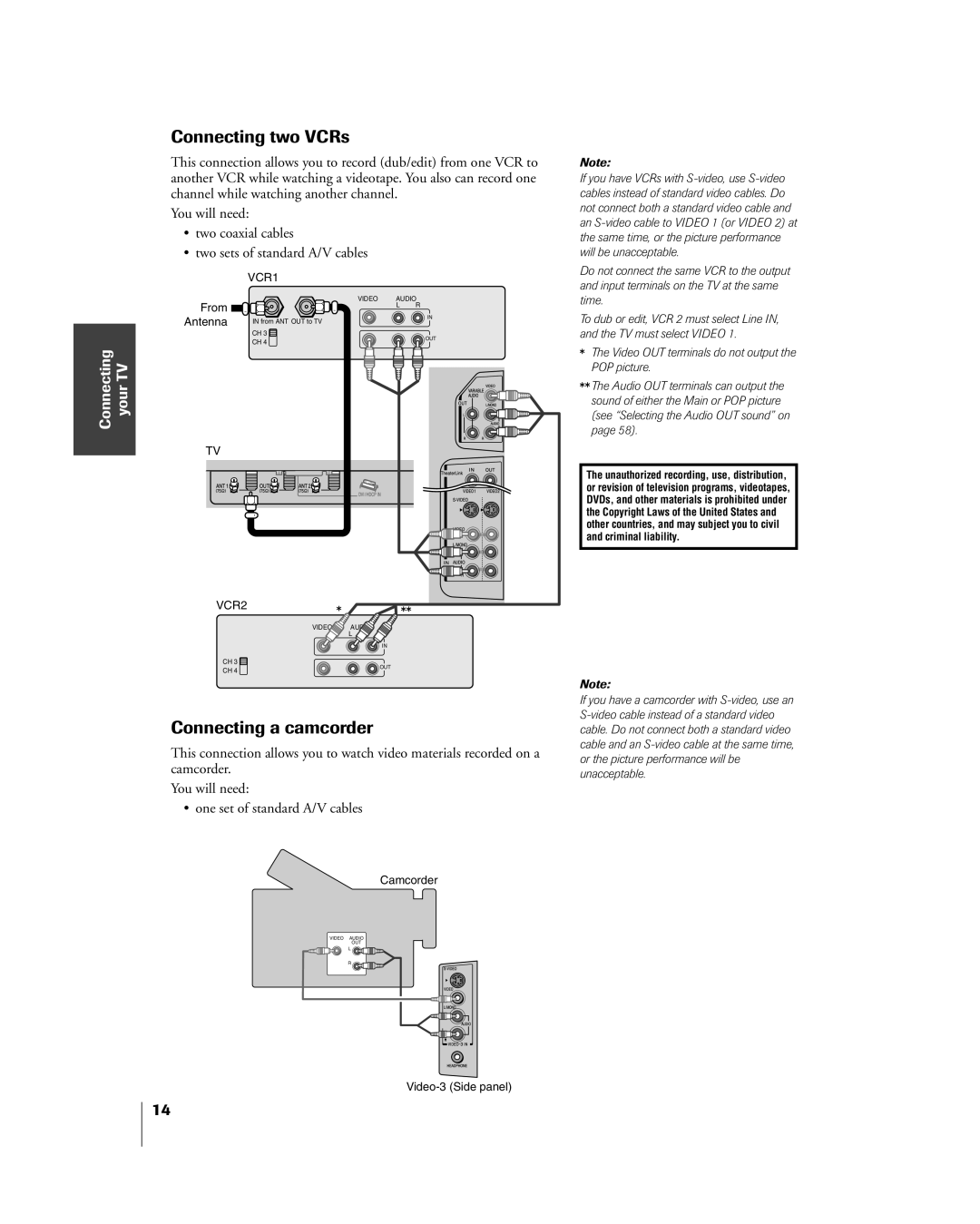
Connecting two VCRs
This connection allows you to record (dub/edit) from one VCR to another VCR while watching a videotape. You also can record one channel while watching another channel.
You will need:
¥two coaxial cables
¥two sets of standard A/V cables
| VCR1 | |
From | VIDEO AUDIO | |
L R | ||
IN | ||
Antenna | ||
IN from ANT OUT to TV |
| CH 3 |
| OUT |
| CH 4 |
| |
|
|
| |
Connecting | yourTV |
|
|
| TV |
|
|
| VCR2 | * | ** |
|
| ||
| VIDEO | AUDIO |
|
|
| L | R |
|
|
| IN |
| CH 3 |
| OUT |
| CH 4 |
| |
|
|
|
Connecting a camcorder
This connection allows you to watch video materials recorded on a camcorder.
You will need:
¥ one set of standard A/V cables
Camcorder
VIDEO AUDIO
OUT
L ![]()
![]()
R ![]()
![]()
Note:
If you have VCRs with
Do not connect the same VCR to the output and input terminals on the TV at the same time.
To dub or edit, VCR 2 must select Line IN, and the TV must select VIDEO 1.
*The Video OUT terminals do not output the POP picture.
**The Audio OUT terminals can output the sound of either the Main or POP picture (see “Selecting the Audio OUT sound” on page 58).
The unauthorized recording, use, distribution, or revision of television programs, videotapes, DVDs, and other materials is prohibited under the Copyright Laws of the United States and other countries, and may subject you to civil and criminal liability.
Note:
If you have a camcorder with
14
